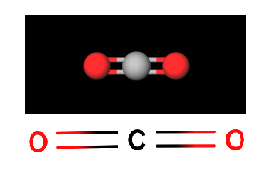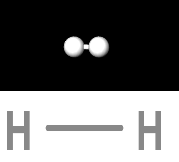Experimenting With Carbon Dioxide As a New Type of Fuel
January 28, 2021
The negative impacts of greenhouse gases on the planet continue to be an issue that many are concerned about. Carbon dioxide, nitrous oxide, methane, and many other greenhouses gases are worsening the issue of global warming. Humans contribute to a large majority of the emissions of greenhouse gases, and as the global population continues to increase, some practices are more in demand, thus increasing the emissions of harmful gases. Scientists are continually researching ways to help alleviate the severity of global warming, and one potential solution to the emissions of carbon dioxide produced by jets may have been found.
In a recent discovery made by scientists, the usage of an iron-based catalyst was shown to be able to convert carbon dioxide into a power source for aircraft. When testing this, scientists mixed together an iron catalyst- to which functions by speeding up a chemical reaction- with hydrogen gas and carbon dioxide. These elements were pressure-heated in a reaction chamber, where the carbon atom was separated from the carbon dioxide, and then attached to the hydrogen gas molecule, producing the hydrocarbon molecules found in jet fuel. The remaining oxygen atoms combined with other hydrogen atoms, forming water. In simplest terms, this process caused carbon dioxide to transform into jet fuel. Considering that jet fuels related to this form of transportation account for approximately 12% of all carbon dioxide emissions, this new method of using carbon dioxide in the atmosphere could potentially result in a cleaner and healthier environment.


One major benefit of this new iron-based catalyst is the fact that it can convert the carbon dioxide into jet fuel in one step. In addition to this, the iron-based catalyst uses a rather inexpensive material- iron. Compared to previous attempts with this idea, other catalysts could convert carbon dioxide into jet fuel after numerous steps, and required more expensive materials.
Thus, an improved application of chemistry on environmental science could gain popularity and practicality in the near future, as climate action is a top priority for many people. If science could be used to solve the issue of excess carbon dioxide in the atmosphere, it seems as though future discoveries could also bring forth helpful solutions to global conflicts. Until then, however, more research and studies will continue to prove what methods are best for resolving the many issues to which are addressed on a global scale.
Works Used
Amaze Lab. Scientists develop method of turning CO2 into usable jet fuel. Microsoft News Kids, 2020, https://www.microsoftnewskids.com/en-us/kids/video/scientists-develop-method-of-turning-co2-into-usable-jet-fuel/vi-BB1ceQwX. Accessed 26 Jan. 2020.
Maria Temming. A new iron-based catalyst converts carbon dioxide into jet fuel. ScienceNews, 2020, https://www.sciencenews.org/article/new-iron-based-catalyst-converts-carbon-dioxide-into-jet-fuel. Accessed 26 Jan. 2020.
Laurel Hamers. Explainer: What is a catalyst?. ScienceNewsforStudents, 2017, https://www.sciencenewsforstudents.org/article/explainer-catalyst-chemistry. Accessed 26 Jan. 2020.
